Greek Easter eggs form an essential part of the Greek Orthodox festivities around Easter time. Symbolising birth and renewal, they're easy to prepare and made without any food colouring. Use my recipe as a guide to make your Greek red eggs and join the celebration! P.S. they contain no chocolate!

CONTENTS
Why this recipe works
- It's easy to prepare. You only need four ingredients to make Greek Easter eggs. It's as simple as peeling the onion skins, adding them to a pot with some water along with the eggs and some vinegar. Cook for 20 mins and allow to steep. Voila! You have beautiful red eggs!
- It's completely natural. My recipe will show you how to dye your eggs naturally using brown onion skins. Traditionally, these eggs are made with Greek red egg dye - or other commercial dyes filled with chemicals. This method comes straight from Mother Nature - which I gladly trust!
- It's traditional. Greek Orthodox Easter is a busy time filled with traditional foods. The week leading up to Easter Sunday is known as "Holy Week". I welcome you to join in the festivities and make yourself at home. Make these "kokkina avga" (translates as red eggs in Greek) on Holy Thursday along with my tsoureki, koulourakia and Greek slow roasted lamb.
What goes into this recipe
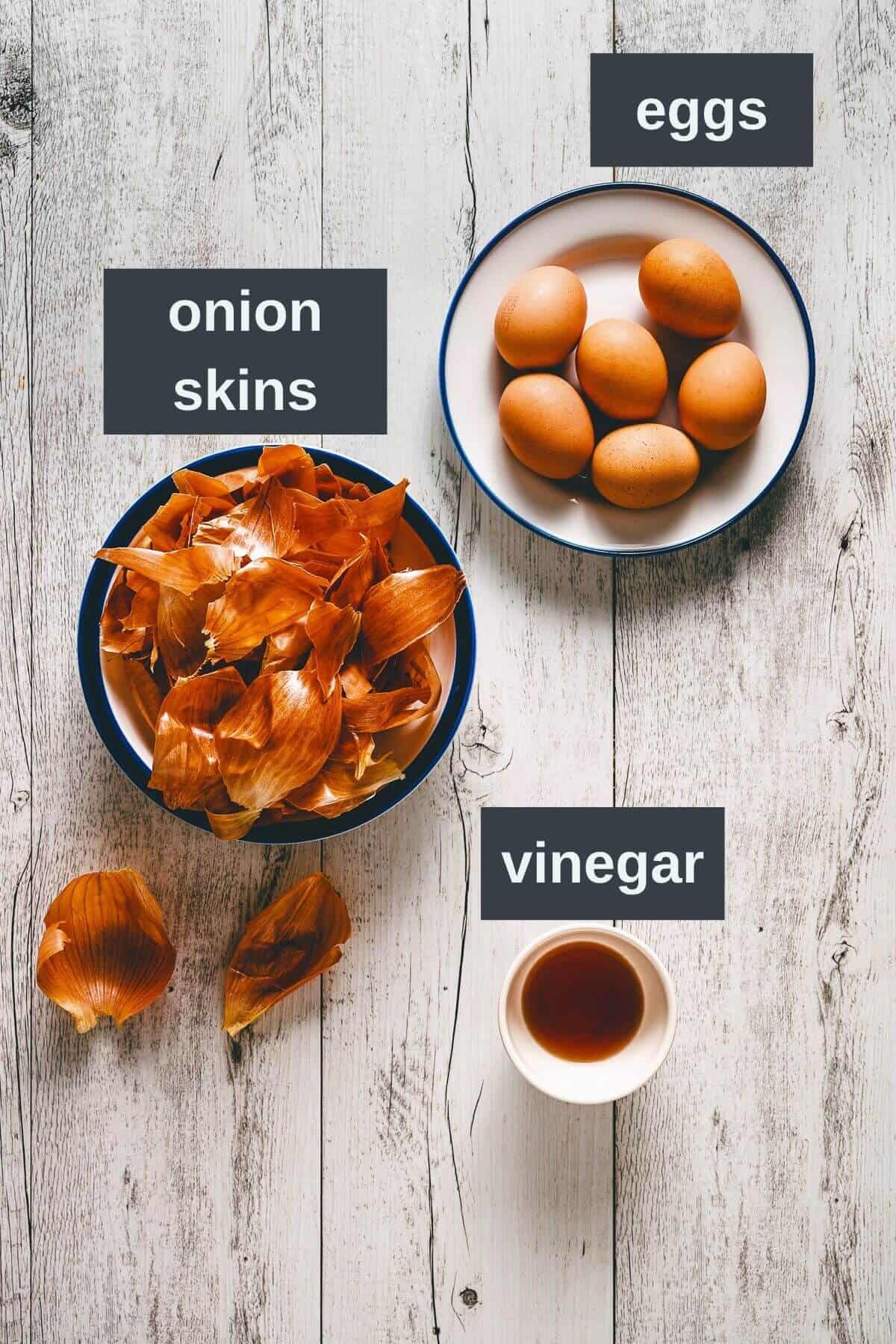
- Eggs.
Use room temperature eggs and make sure they're fresh . The colour of your eggs will also play a part in how they turn out. I used brown eggs, and after the recommended steeping time, they turned a very vibrant red - almost dark crimson like. If you choose to use a lighter coloured egg or even white eggs, you may need to adjust the steeping time. - Onion Skins.
Brown onion skins is the key to getting good red colour. Initially sceptical - this actually works! I use one whole medium to large onion's skin per egg. - Vinegar.
I used red wine vinegar to continue with the theme of red eggs. But you can use white vinegar if you prefer. I believe the vinegar helps the natural dye stick to the shell. - Olive Oil - (not pictured)
Once your eggs have cooled a little, use a small amount of olive oil to buff and give them a good shine. Any oil works - and it makes our red Easter eggs look magnificent!
How to make this recipe
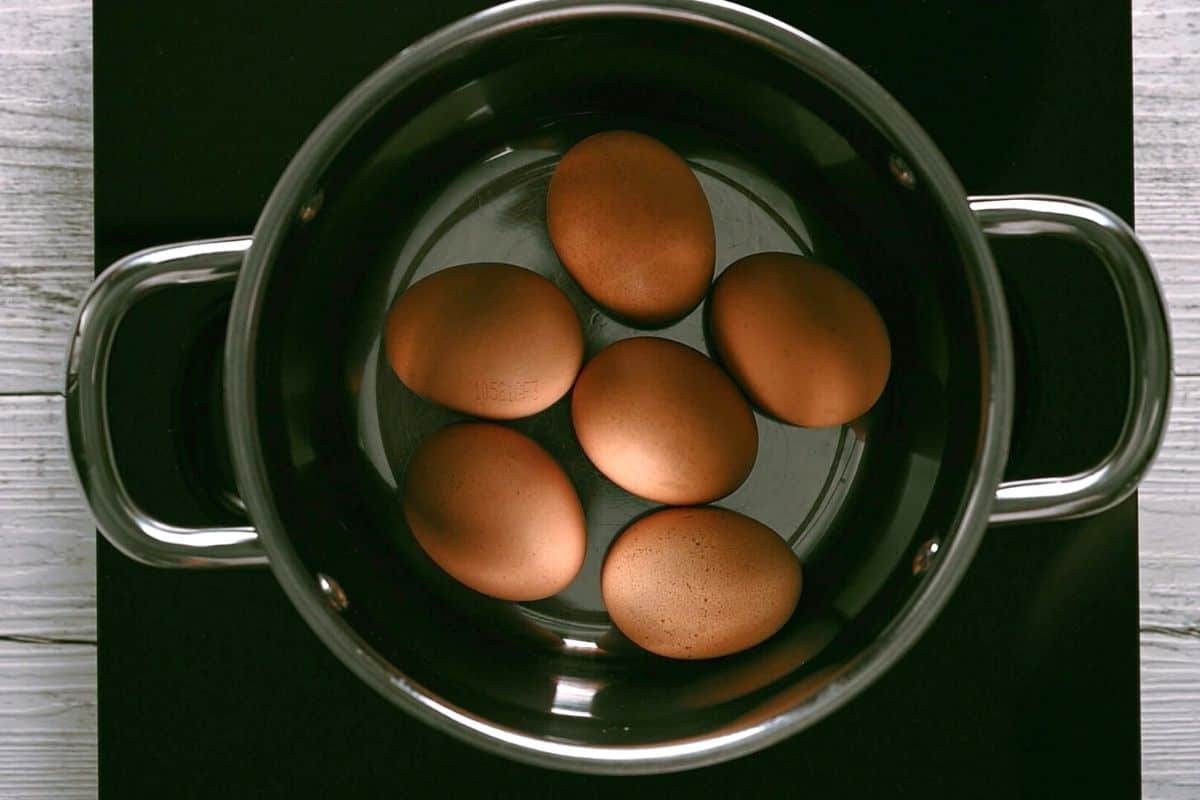
(1) Place eggs in a single layer on the bottom of a stainless steel pot.

(2) Add the brown onion skins and the water - making sure it covers the onion skins and the eggs.
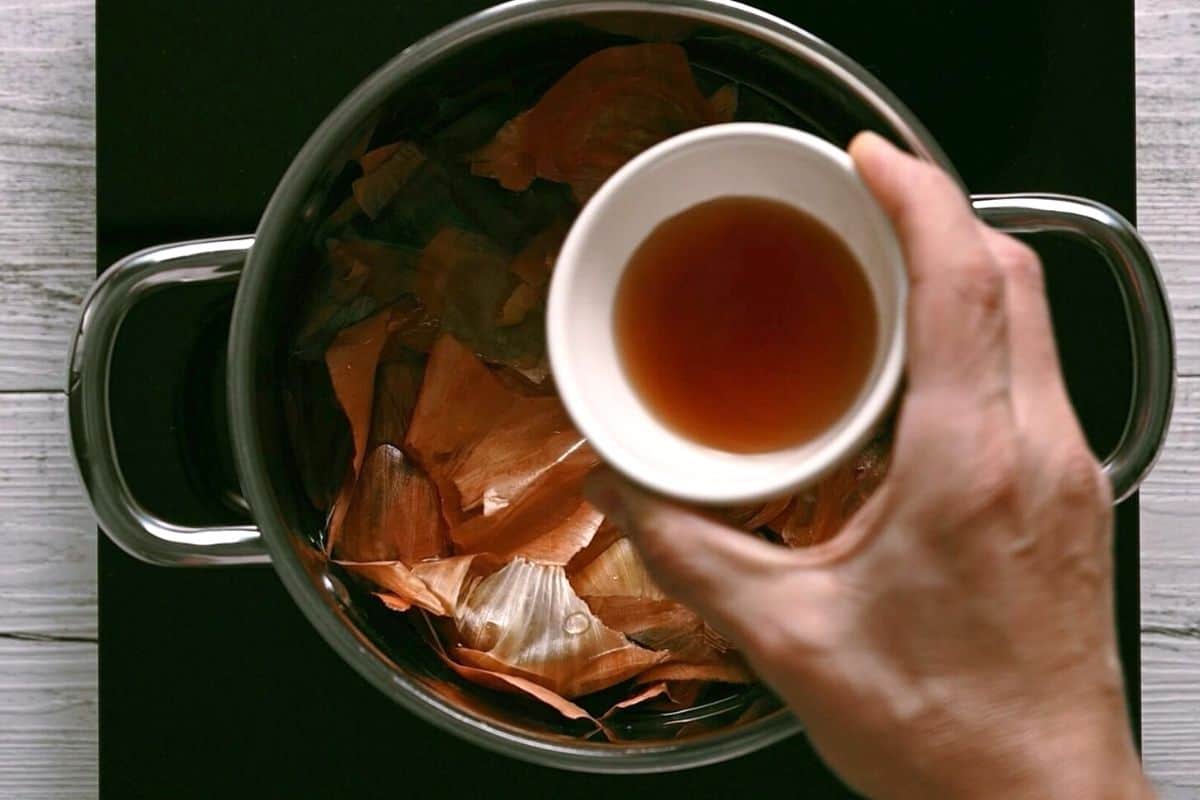
(3) Add the red wine vinegar and stir. Cook on medium heat for 15-20 mins. Remove from the heat and allow the eggs to cool and steep in the natural dye. The longer you leave it, the more intense the colour will be. I soaked mine for 1.5 hours.
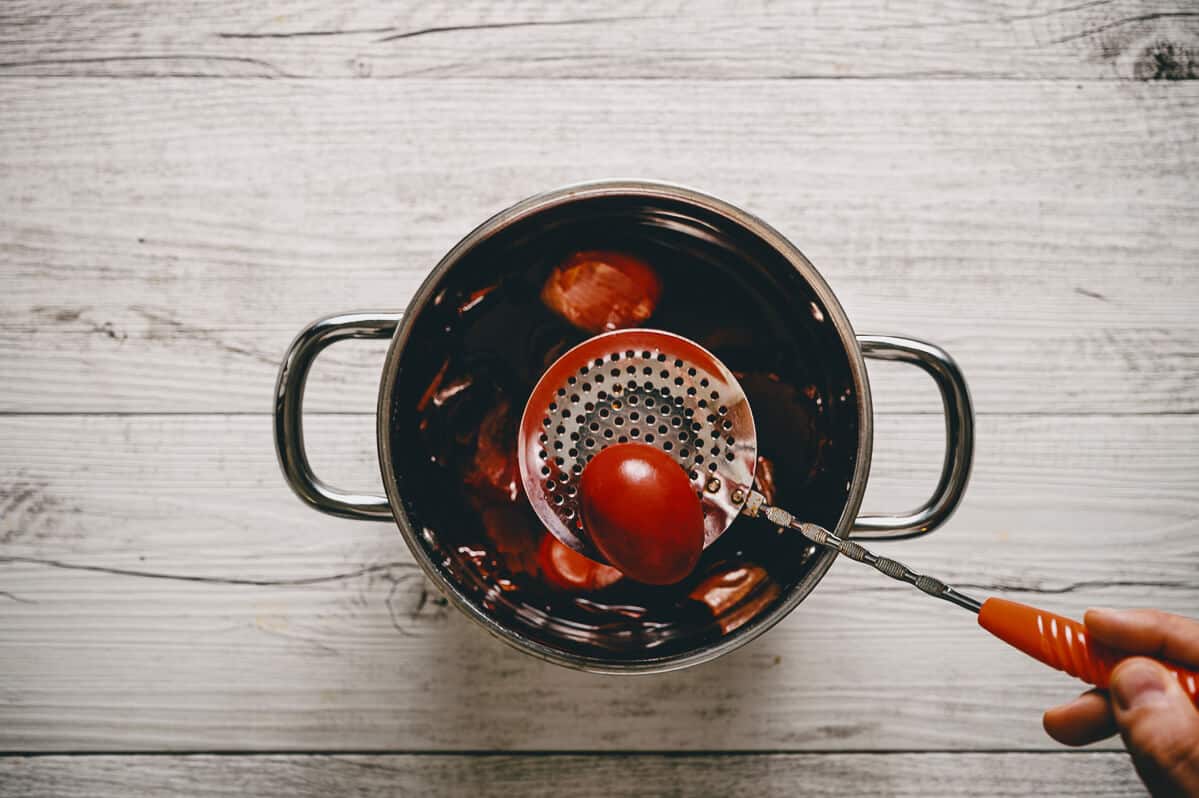
(4) Remove the eggs with a slotted spoon.
Valuable tip
The longer you leave the eggs in the dye, the more intense the colour will be. I soaked mine for 1.5 hours.
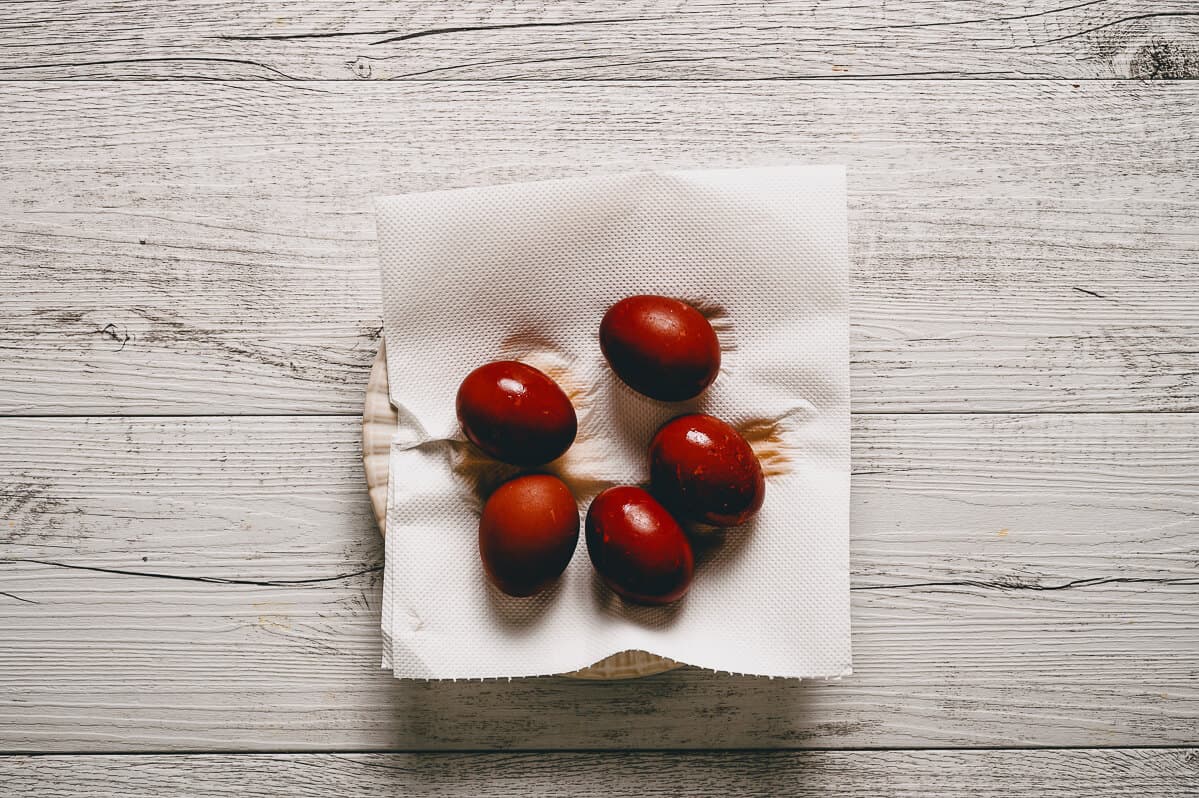
(3) Place the dyed eggs on a paper towel-lined dish to dry.
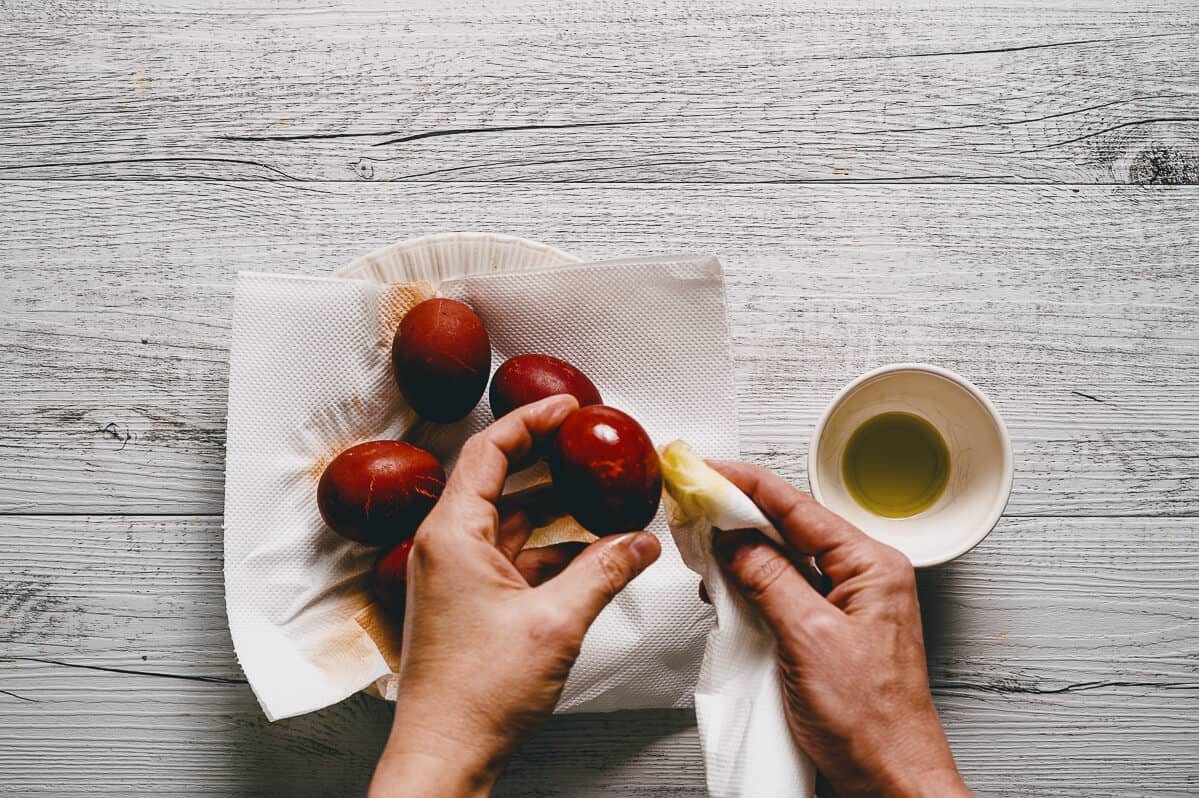
(4) Allow the eggs to dry completely before polishing with a little bit of olive oil.
Greek Easter egg cracking tradition

Now that we have our beautiful, shiny Greek Easter eggs, what do we do with them?
Apart from being used to decorate tsoureki - (traditional Easter bread), they also form part of an Easter tradition called "tsougrisma" (pronounced tsoo-gree-sma).
On Easter Sunday, everyone gets to play this fun game, and it basically involves holding your egg and cracking it against your opponent (usually a family member).
It's a lot of fun, and the person who successfully cracks the eggs of the other players is declared the winner and, it is said, will have good luck during the year.
I believed there was some "secret" to it for years, but I have often been proven wrong!

Expert tips
- Fresh eggs. Use fresh eggs. To do the freshness test, fill a bowl with cold water and place your eggs in it. If they sink to the bottom and lay flat on one side, they are considered fresh. If they float, they are not fresh. N.B. this only determines freshness - this method can't tell you if an egg has gone off. Always check the expiry date and give them a good sniff too.
- Leftover Onions. What should I do with my leftover onions? Chop them and freeze them. Place the portioned chopped onions in a freezer bag and remove as much air as possible and seal. Place in the freezer and use within 3-6 months.
- Different coloured eggs. In recent times, people have started dyeing their Greek Easter eggs in different colours. Anything from purple to blue! I had never experimented with any other colours, except for once when I used red onions. This resulted in a bizarre "brown-ish" colour that was not very pleasant!

FAQ's
It's a religious symbol - it represents the blood of Christ and the sacrifice he made on the cross. Others see red eggs as a symbol of new life - typically because Greek Orthodox Easter (in the Northern hemisphere) occurs in Spring.
On Easter Sunday and for forty days after, Greeks say "Christos Anesti" (Christ has risen!) - which is replied with "Alithos Anesti" (It's true - he has indeed!). This is also exchanged during the cracking of the eggs! Greeks will also say "Kalo Pacha" - which literally translates as Happy Easter!
More Greek Easter recipes
Video - how to make them
If you've made this recipe or any other recipe on the blog - don't forget to rate it and leave a comment below. You can also follow the blog on Facebook, Instagram and Pinterest OR sign up to the Newsletter for the latest delicious recipes.
📋 Recipe
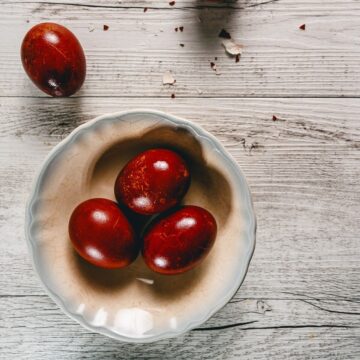
Greek Easter Eggs
Ingredients
- 6 eggs, fresh (see note 1)
- 6 brown onion skins
- 2 litres water
- 2 tablespoon vinegar, (see note 2)
- 1 teaspoon olive oil
Instructions
- Place eggs in a single layer on the bottom of a stainless steel pot.
- Add the brown onion skins and the water - making sure it covers everything
- Add the red wine vinegar and stir. Cook on medium heat for 15-20 mins. Remove from the heat and allow the eggs to cool and steep in the natural dye (see note 3)
- Remove the eggs with a slotted spoon and place them on a paper towel-lined dish.
- Allow them to dry completely before polishing with a little bit of olive.
Notes
- Fresh eggs. Use fresh eggs. To do the freshness test, fill a bowl with cold water and place your eggs in it. If they sink to the bottom and lay flat on one side, they are considered fresh. If they float, they are not fresh. N.B. this only determines freshness - this method can't tell you if an egg has gone off. Always check the expiry date and give them a good sniff too.
- I used red wine vinegar but any vinegar will work.
- The longer you leave your eggs soaking in the dye, the more intense the colour will be.
- Leftover Onions. What should I do with my leftover onions? Chop them and freeze them. Place the portioned chopped onions in a freezer bag and remove as much air as possible and seal. Place in the freezer and use within 3-6 months.
- Different coloured eggs. In recent times, people have started dyeing their Greek Easter eggs in different colours. Anything from purple to blue! I had never experimented with any other colours, except for once when I used red onions. This resulted in a bizarre brown-ish colour that was not very pleasant!
Nutrition
This website provides approximate nutrition information for convenience and as a courtesy only. Nutrition data is gathered primarily from the USDA Food Composition Database, whenever available, or otherwise other online calculators.
© Souvlaki For the Soul



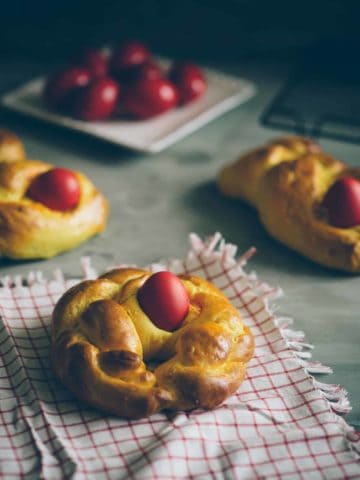

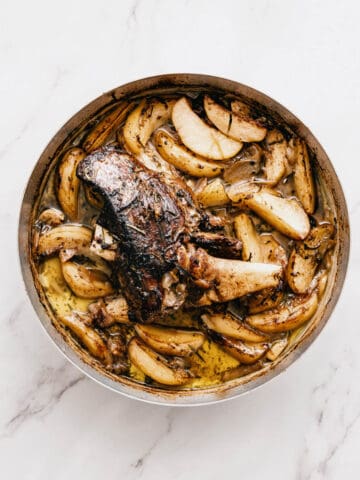
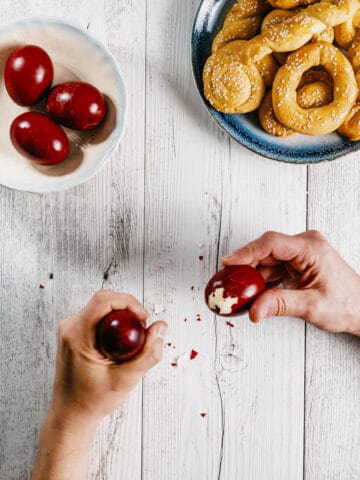
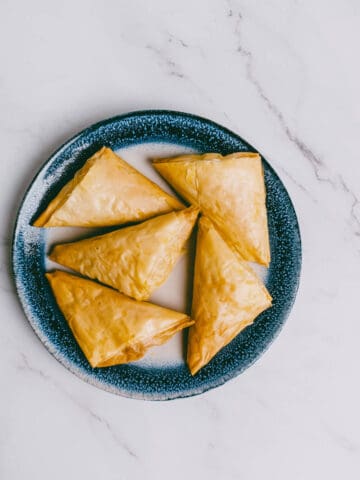
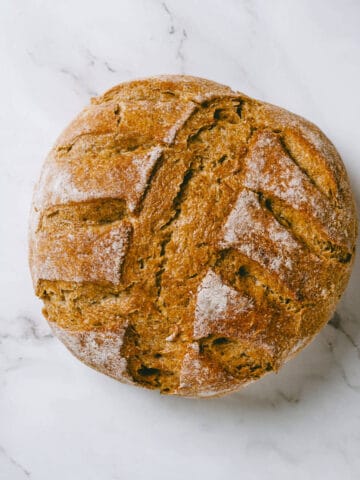
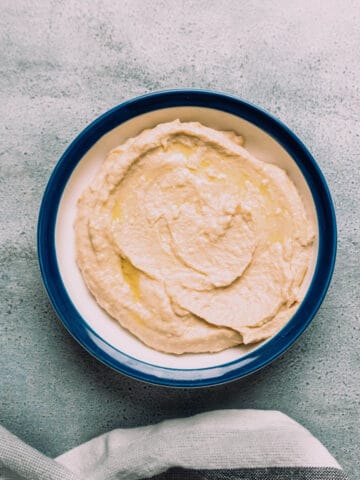
Adriana
I wish I can send you a picture of my Easter eggs which I made for Easter using onion skin and leaves. This is the Romanian style and each egg has the design of the leave on it in a much lighter color than the red eggs. Everyone was in awe